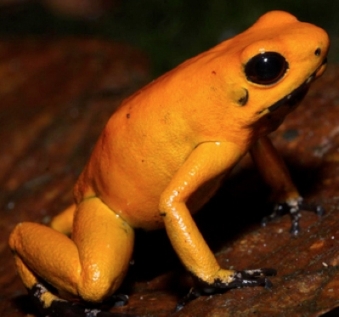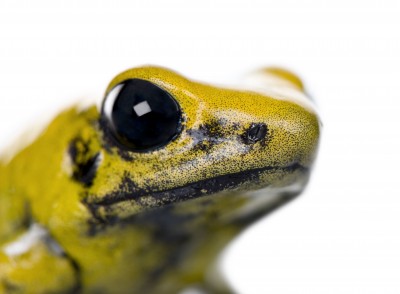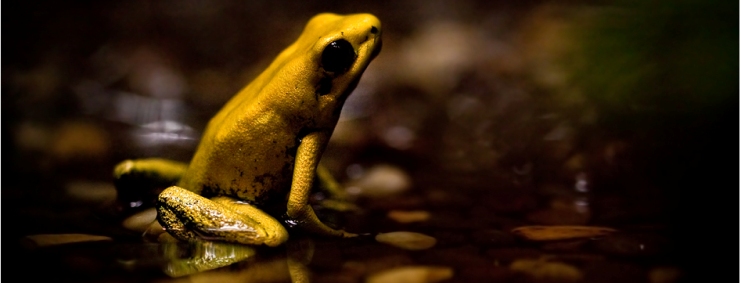Nutrition
The nutrition of a Golden Poison Dart Frog is incredibly important for the toxicity of the organism. They are heterotrophic and have a strict diet of insects including flies, crickets, ants, termites, beetles, and other small insects. The insects contain a Batrachotoxin, which is then ingested by the frog, giving it the incredible toxicity level that it has. The frog captures its food by using its long, sticky tongue. They are quite good predators because they stalk their prey and attack in one quick movement. The sticky tongue comes to aid here so that if it hits any part of the "bug" it will be snatched up into the mouth. The reason for their high toxicity is due to their feeding on a small Choresine beetle, which contains the Batrachotoxin. They can also feed on terrestrial non-insect arthropods and terrestrial worms.
 After ingesting their prey the frog has to go about breaking down
its food for better nutrient uptake. The food will travel through
the intestines and stomach where it is broken down and then absorbed
into the blood stream. After being absorbed into the blood stream
the frog transports the nutrients to the rest of the body via a
closed circulatory system. This is a 2 circuit circulatory system
where oxygen poor blood is pumped through the lungs to become
oxygenated and then delivered to the rest of the body. After
delivering oxygen to the body it will return as deoxygenated blood
to the heart where the cycle will then repeat itself. A closed
circulatory system is one that transports blood (hemoglobin) by
arteries,veins, and capillaries.
After ingesting their prey the frog has to go about breaking down
its food for better nutrient uptake. The food will travel through
the intestines and stomach where it is broken down and then absorbed
into the blood stream. After being absorbed into the blood stream
the frog transports the nutrients to the rest of the body via a
closed circulatory system. This is a 2 circuit circulatory system
where oxygen poor blood is pumped through the lungs to become
oxygenated and then delivered to the rest of the body. After
delivering oxygen to the body it will return as deoxygenated blood
to the heart where the cycle will then repeat itself. A closed
circulatory system is one that transports blood (hemoglobin) by
arteries,veins, and capillaries.
To visit the Reproduction page click
here
Photo courtesy of ProAves
For main page click here

